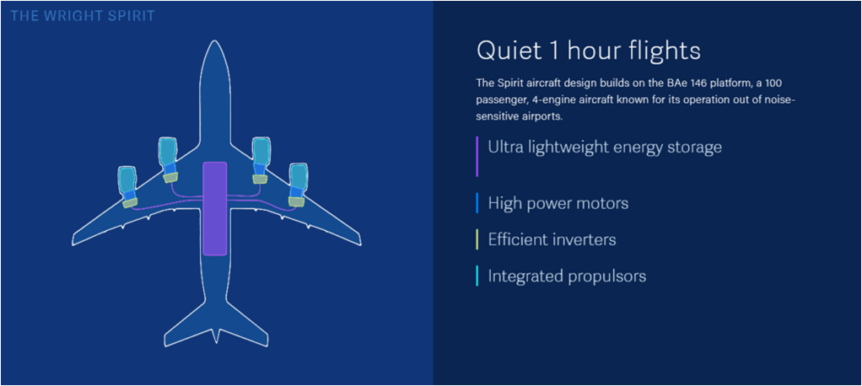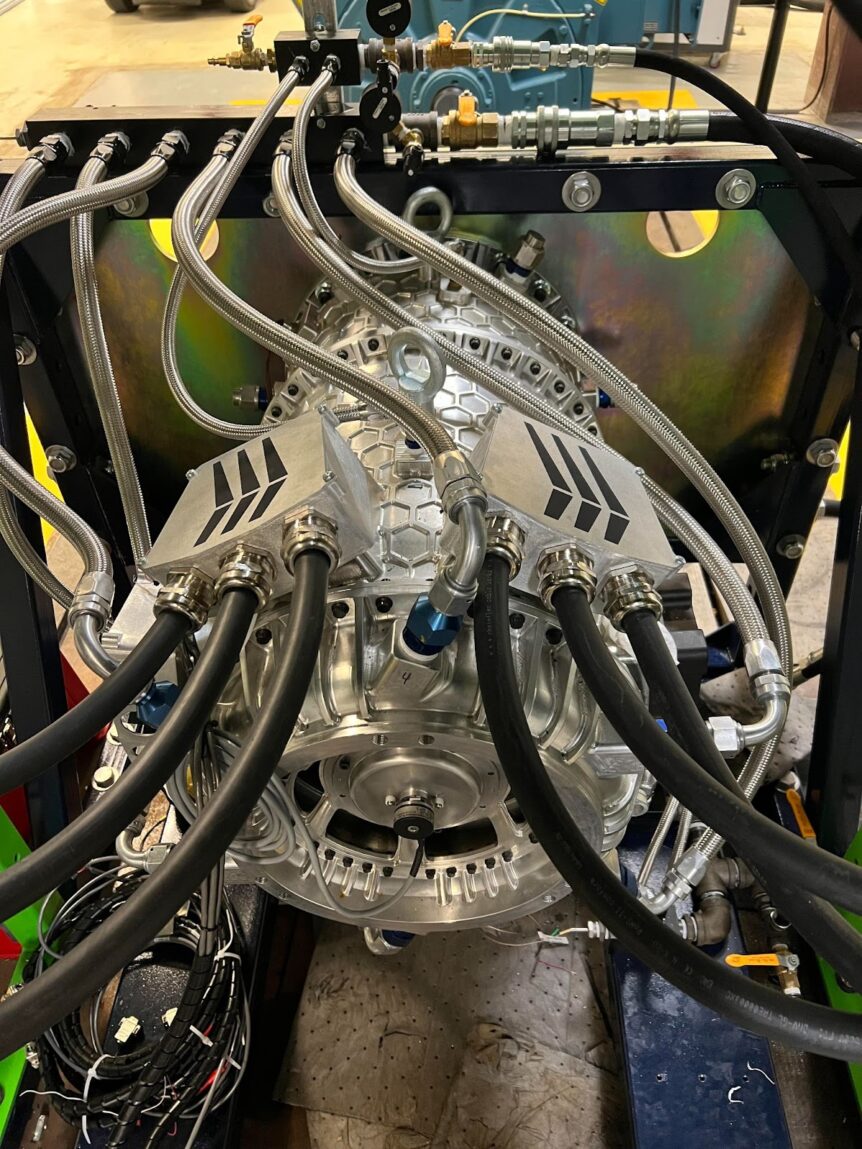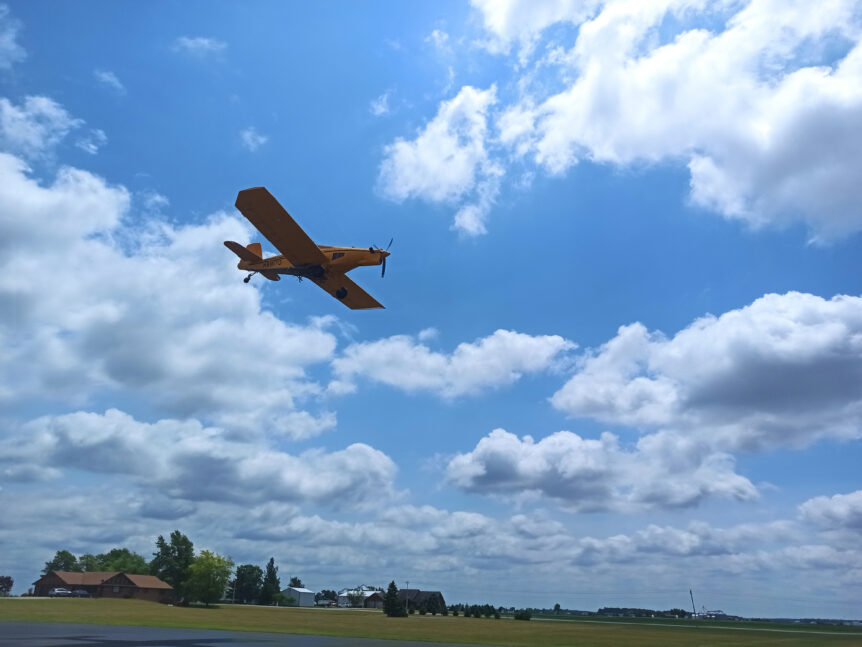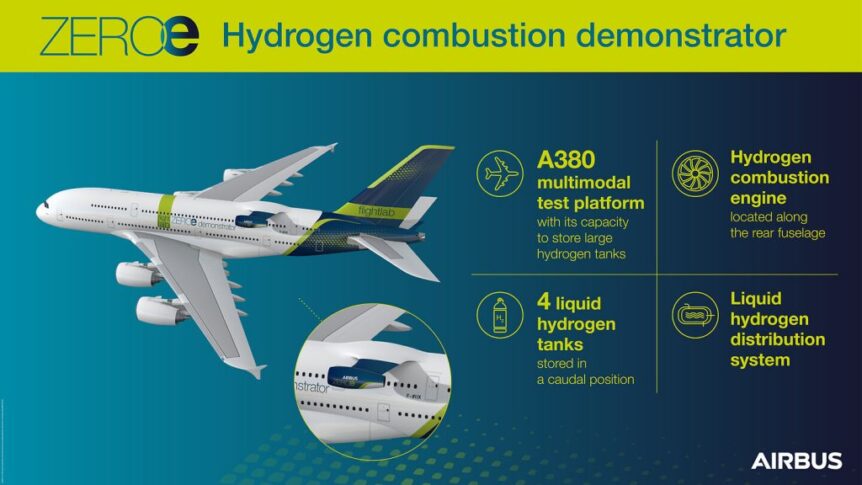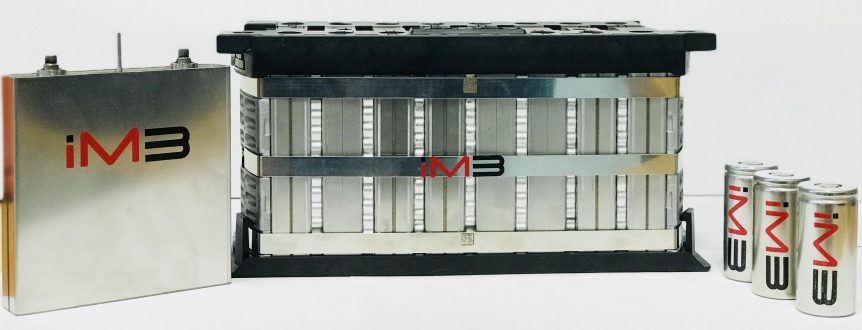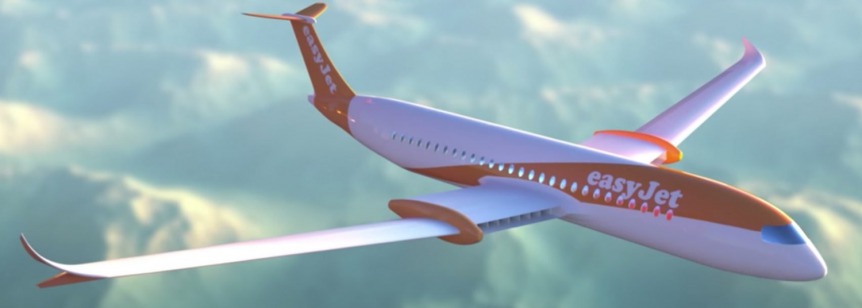A one kilowatt per kilogram battery would be a literally fulfilled wish in any aircraft designer’s list of desirable advances. Tesla’s drive around with 260 Watts per kilogram in their floors, and Amprius recently announced 500 Watt per kilogram cells. A battery able to store one kilowatt of energy in one kilogram (2.2 pounds) would be an enormous breakthrough for electric aviation. Under “stealth” development before being announced in 2023, the battery could become a fitting companion to the lightweight motors and controllers Wright is crafting. ARPA-E (the Advanced Research Projects Agency–Energy) rewards some very creative teams. One winning team combines Wright Electric and Columbia University in an effort to develop tomorrow’s 4X batteries. Three Project Parts ARPA-E awarded $1,499,098 to “support development of an ultra-energy-dense aluminum battery and novel artificial intelligence system.” Part of the Plane Electrification with 1K energy storage systems program (PROPEL-1K), the award will fund what Wright promotes as “Air-1, [an] elevated temperature battery designed for …
Wright Electric Passes Partial Discharge Tests
Wright Electric, testing its 1.2 megawatt motor, has passed partial discharge tests, a significant achievement in high-altitude safety. The company explained the results and their importance in a press release. ”Wright Electric Announces Successful Partial Discharge Testing on our Motor” “We are pleased to share a significant achievement in our ongoing pursuit of decarbonizing the industries that are hardest to decarbonize. Wright Electric proudly announces the successful completion of an altitude simulation test conducted in the Wright Lab, showcasing our 2 megawatt motor’s robust performance at a simulated atmosphere equivalent to 43,000 feet without experiencing Partial Discharge (PD).” Jeffrey Engler, founder and CEO of Wright Electric, explains in the press release, “Partial discharge is a form of electrical failure where electric charge escapes through tiny voids in apparently solid insulation. When partial discharges occur they can degrade the insulation and create a risk of fire in the motor. PD becomes more likely at high altitudes due to thinning of the …
Wright Electric Goes Agricultural
Following its announcement of a range of battery packs last month, Wright Electric shares information about its one-megawatt motor powering an Embraer agricultural airplane. Teaming with Axter Aerospace, a Spanish firm with a history of providing backup electric power for otherwise conventionally powered aircraft; Wright helps make crop dusting a safer enterprise. This eight-year-old video shows Axter’s early efforts with a small Tecnam aircraft. (Note: you might want to turn on the closed captioning.) Low-level flying necessary for dusting or spraying crops requires utter reliability, so a proven turbine backed up by a high-power electric motor seems like an ideal combination for those circumstances. The combined power of 800 kilowatts (1,072 horsepower) allows carriage of a large payload, sufficient power to avoid obstacles, and redundancy to prevent sudden letdowns. The electric motor has been tested to 1.2 kilowatts (1,608 horsepower), so could provide adequate power even if the turbine failed. Failure of either power source is highly unlikely in any …
Wright Electric’s 8-Year Plan
Jeffrey Engler has headed up Wright Electric for the last decade, working to provide efficient motors, inverters and overall power systems for airliners. Now, his firm is working to develop those airliners. From a startup in 2016, looking for a single-engine light aircraft to convert to hybrid power, Jeffrey has grown Wright to a recognized force in future flight. Presenting a mission statement and schedule for the next eight years, Wright has ambitious, but reasonable plans. Currently, Wright is testing a two megawatt motor and inverter, “Collaborating with NASA, U.S. Department of Energy, and U.S. Department of Defense.” Testing will continue through 2023. The firm predicts it will be flying its Wright Spirit between the busiest “city-pairs” in the world by 2026. The Spirit, a BAe 146 converted to electric power, will connect paired destination such as, “Seoul-Jeju, London-Paris, Rio de Janeiro-São Paulo, and San Francisco-Los Angeles.” “Wright’s goal is to make all single-aisle flights shorter than 800 miles zero-emissions,” …
Airbus and CFM: Flying on Hydrogen Power by 2035
Airbus and engine maker CFM International have signed a partnership agreement on a hydrogen demonstration program that could see commercial flights by 2035. CFM is a 50/50 joint company between GE and Safran Aircraft Engines. The team announced its intentions in an hour-long introduction on February 22, with members from the companies explaining the goals of the project. A view of what they intend to do with Airbus 380 serial number one gives a view inside the cavernous craft. As pointed out in a Green Car Congress article, the main objective is to develop and flight test a direct combustion engine fueled by liquid hydrogen. The Biggest Test Bed ZeroAvia seeks to get a 20-passenger liner in flight by 2024 and scale up to a 200-seat craft with 3,000 mile range by 2035. Jeff Engler’s Wright Electric is working on a BAe 146 with short-range aspirations for its 100-passenger, hydrogen fuel cell or aluminum cell-powered airplane by 2026. (We will …
Wright’s 2 MegaWatt Motor
Jeffrey Engler of Wright Electric has huge ambitions, including producing a 186-seat electric airliner and now testing a two megawatt “aviation-grade motor for transport-category zero-emissions aircraft.” If Engler’s vision becomes reality, “By 2040, Wright will eliminate carbon emissions from all flights under 800 miles.” Leap-frogging most other developer’s plans to make 10-, 19-, or even 50-passenger airliners, Wright plans a 186-seat, single-aisle airliner with distributed electric propulsion (DEP), spreading thrust across the wings and tail of the proposed craft Each motor will produce two megawatts (2,700 horsepower), greater than anything now flying. When your editor first started writing about this new technology, even model aircraft builders were ganging several small electric motors to produce enough thrust for “3D”-style flight, demonstrating the ability to hover on a propeller in aerobatics. In 1978, Fred To used four Bosch motors and a single propeller to power his Solar One machine. In a current perspective, the 2MW is equivalent to 66.66 Aerolite 103 motors, …
Norway and the Netherlands Electrifying Aviation
Two European states that will benefit from the electrification of short-range airline flights are becoming strong proponents of new technology. Norwegian Would The Guardian headlined its article on greener airlines this way: “Norway aims for all short-haul flights to be 100% electric by 2040.” A subheadline explained, “It already has more electric cars than any other country in the world and also has shipping projects underway.” That’s in terms of market share, with electric and hybrid vehicles representing more than half of new car registrations in 2017. Avinor, the public operation of Norway’s airports, says short-haul airliners should be entirely electric by 2040, cementing the Nordic nation’s role as a pioneer in the field of electric transport. Chief executive Dag Falk-Petersen promised Norway, “Aims to be the first in the world” to make the switch to electric air transport. He added, “We think that all flights lasting up to 1.5 hours can be flown by aircraft that are entirely electric,” …
The C4V Battery – Solid-State in Production?
Jeffrey Engler of Wright Electric posted an item about Charge CCCV, LLC (C4V) which “demonstrated a prototype of its new Solid State Battery (SSB) at the NY BEST 2018 Fall Conference in New York. The Company’s SSB solution delivers higher performance, higher density, lower cost batteries that promise to require significantly less charging time than others.” The startup announced a 380 Watt-hour-per-kilogram battery already in production. Since your editor tends to become a bit snarky about the usual two-to-five-year period of anticipation before these numbers become reality, he rushed to check out the claims. Plausible Numbers, but Uncertain Time Frame The firm’s numbers are not wildly excessive, and they seem to be getting funding and finding partnerships with established companies. The video is not great proof of anything other than that a metal box with the company’s logo exists. Their web site gives credibility to their ability to produce actual batteries. According to C4V, “Approximately 80% of the cost to …
Forget the Airborne Pizza! Chip Yates Sends 700 Pounds!
Recent news shows aerial drone delivery of small packages from an Amazon Warehouse or pizza from the nearest Dominos, but such packages are lightweight trifles compared to the 700 pounds Chip Yates promises to drop from the sky. Such loads are necessary in conflict and disaster areas, where material heavy enough to hold off an enemy or feed hordes of refugees is essential. Fifty-kilogram sacks of rice or electric generators are necessary for survival, and a heavy-duty delivery system will almost always come in handy. Chip, head of Yates Electrospace, has gone over 200 mph on an electric motorcycle, taken the UQM motor from that machine, and powered his Long-ESA aircraft to also top 200 mph. As Aviation Week and Space Technology notes in its March 26-April 8 edition, “It is ironic, therefore, that the first product from his company… should be an unmanned cargo glider.” It’s the Silent Arrow, delivered in its own box, which becomes the fuselage for …
Jeff Engler’s Wright Aero Leaps Into Green Flight
Partnering with easyJet, a UK-based budget airline, to build an electric airliner capable of carrying 150 passengers on sub-two-hour flights, Wright Aero will substitute electrons for liquid fuel on one-fifth of EasyJet’s trips. Finding a ready collaborator in easyJet’s Carolyn McCall, Engler has a partner who is already making inroads into making jet flight cleaner. “’We can envisage a future without jet fuel and we are excited to be part of it. It is now more a matter of when not if a short haul electric plane will fly,’ said EasyJet CEO McCall,” in an interview with The Guardian. Engler added, in his latest Wright Weport: “First, the context is on Wednesday easyJet announced a partnership with us during their Innovation Day…. We could not be more excited! “(Note: if you have a second, would you mind posting the article on facebook/twitter? We’re hoping it reaches as many battery researchers’ eyes as possible! Thank you in advance!) “Second, our main takeaway …
- Page 1 of 2
- 1
- 2

